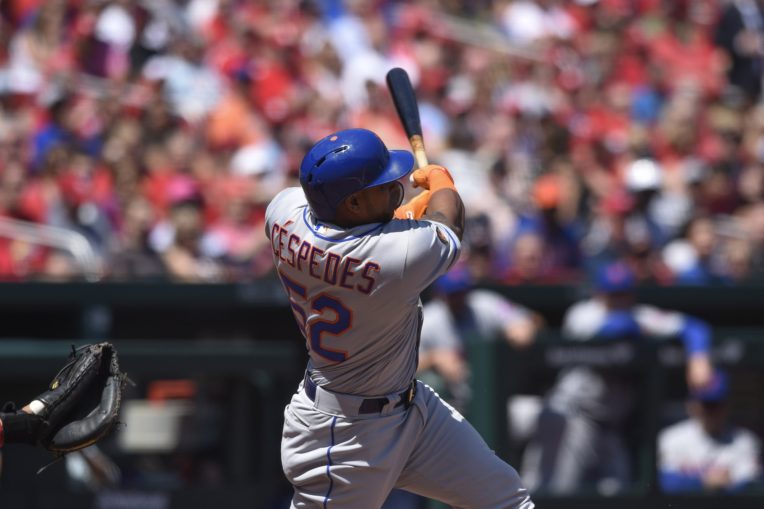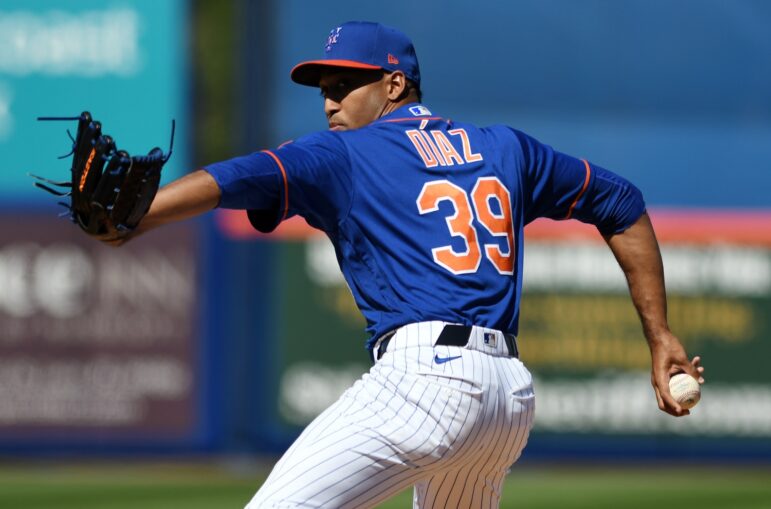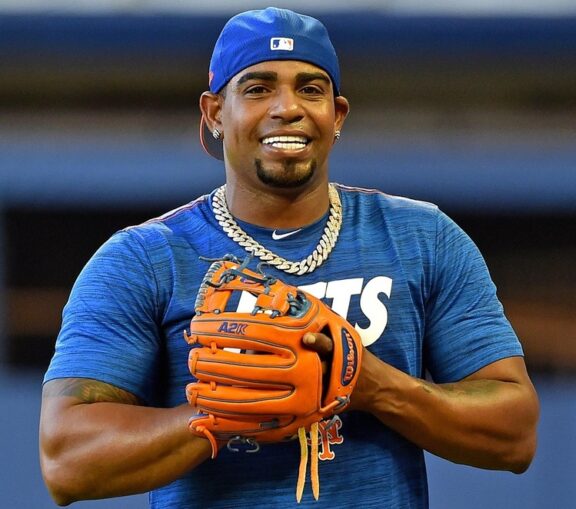
Well, what do you know? The 2020 season is actually upon us.
In an extremely Paul Rudd voice,”Hey, look at us…”.
With players set to report to summer camp, er, Spring Training 2.0 at Citi Field next Wednesday, the New York Mets — along with the other 29 teams across MLB — at long last have their where and when.
A quick browse of the team’s depth chart certainly induces hope for a competitive sprint to the scheduled September 27 finish line.
Between Pete Alonso, Jeff McNeil, Michael Conforto, Brandon Nimmo, J.D. Davis, Dominic Smith, Robinson Cano, Wilson Ramos, and Amed Rosario, the Metsies appear to be ready to mash on the offensive side of the chalk.
The addition of the designated hitter to the National League this season should give the Mets even more flexibility. The luxury of shifting Davis, Smith, Ramos, or even Alonso into the DH spot gives this roster an exciting dynamic.
Jake Marisnick assuming outfield duties for the night while still allowing a Conforto or Nimmo to stay in the batting order is a win. Tomas Nido‘s elite defensive skills behind the dish with Buffalo Ramos occupying the five or six-hole is a substantial boon in multiple aspects.
Where Yoenis Cespedes fits into this puzzle is anyone’s guess. But if he’s healthy, as was reported this week, watch out. Sure, Yo is a few years older, and most likely a few steps slower, but if that bat still plays, all that floating DH talk could go directly out the window.
Something to keep an eye on, for sure.

On the hill, the Mets were dealt a crushing blow with the loss of Noah Syndergaard to Tommy John surgery this spring. Though, there’s still a comfortable level of talent strewn about this rotation. Arguably — and even more so over the course of a 60-game season — the Mets could make this work.
Marcus Stroman has been an ace in this league and figures to be the ideal in-house replacement for Syndergaard’s vacated No.2 spot. After pitching to a 2.91 ERA over his final six starts with the Mets last season, it appears Stroman is more than prepared to assume that position. No concerns there.
Steven Matz‘s ongoing maturation at the big league level took an exciting turn toward the end of last season, as well. From August 14 through September 11, the 29-year-old southpaw pitched to a 1.80 ERA over six starts with 35 strikeouts and 11 walks.
The talent is surely there for Matz. And with the guidance of analytically-minded pitching coaches Jeremy Hefner and Jeremy Accardo, there could be another gear for the left-hander to shift into.
Michael Wacha and Rick Porcello, two of general manager Brodie Van Wagenen’s offseason additions to fill the void left by Zack Wheeler‘s departure to Philadelphia, were originally slated to compete for the fifth rotation spot, as evidenced by Wacha’s relief-incentive-laden contract.
Not anymore. Both Porcello and Wacha have had success in this league. Neither will wow you or blow hitters away, but pitching isn’t all about throwing. Hitting spots, missing bats, and drawing weak contact is a sizable portion of the battle.
Between Porcello’s curveball (89th percentile in spin rate, per Baseball Savant) and Wacha’s above-average 87.6 MPH exit velocity induced and 53 percent hard-hit rate, the potential for both to act as serviceable back-end cogs is most definitely prevalent.
Neither will replace the value that’s been lost since the 2019 season wrapped up, but with Jacob deGrom, Stroman, and Matz leading the way, serviceable is all they need to be.
Are there question marks? Of course. But what team doesn’t have a stack of ifs in their rotation?

And now for the most important part of the 2020 Mets equation — the revamped, ramped-up bullpen. With such a short time to prepare for this abbreviated campaign, there’s no telling how the Mets or any other team’s pitching staff will be used this season.
Starters might go five or six innings, but likely not for a bit. How long will it take for guys to get truly stretched out? Mid-August? That leaves six weeks of 100-pitch games from your starters.
From Edwin Diaz down to Robert Gsellman — maybe even further down the trough if things get nutty down the stretch — the Mets’ relief corps has to be the backbone of this team.
If Diaz and Jeurys Familia bounce back just to career averages (3.33 ERA, 14.5 strikeouts per nine for Diaz; 3.16 ERA, 9.4 K/9 for Familia) after respectively horrendous seasons last year — as intimated since there was snow on the ground — this group could be scary good.
Seth Lugo‘s been one of the most valuable relievers in baseball since the start of 2018 (3.5 wins above replacement via FanGraphs ranks eighth in MLB over that span) and it appears he’s only getting better. Let’s hope that trend continues.
Before missing nearly all of 2019 with injuries, Dellin Betances — signed this offseason, as well — was similarly elite, racking up 6.5 fWAR between 2015 and 2017 with the Yankees (fourth in MLB).
After blowing 27 saves as a team in 2019, this level of skill — if Lugo, Betances, Diaz, and Familia are firing on all cylinders, of course — should rectify those issues this season.
The ingredients are here for a winning recipe (ugh, corny enough?) pretty much across the board. If the cards fall the Mets’ way, this could be 60 games of excitement.
We’ll take that, despite Brodie’s distaste for ifs.















